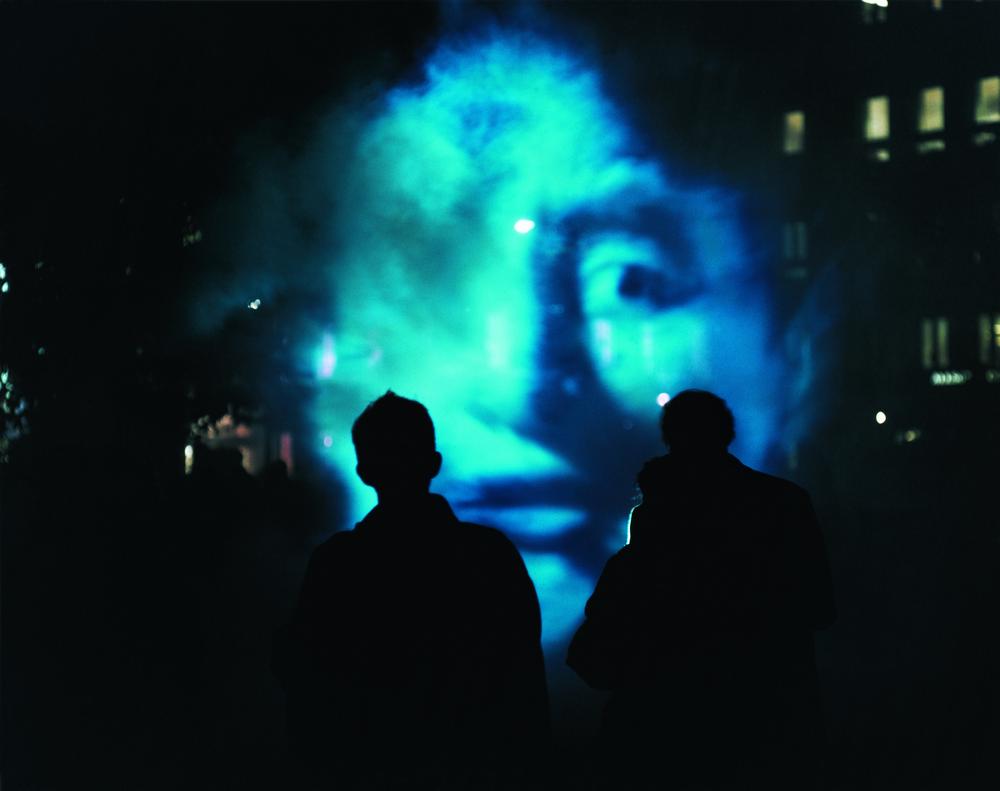Tony Oursler. The Influence Machine
Faces and moving images are eerily projected into clouds of smoke and on trees and walls in Tony Oursler’s multiple-projection outdoor installation The Influence Machine (2000). Light and the sounds of babbling voices materialize into sculpture. Known for his work projecting images through space onto various mediums—fiberglass armatures, paper, smoke—Oursler combines the intangible qualities of light with the physicality of material. In what he calls a “third space,”1 Oursler—whose grandfather Fulton Oursler was an accomplished magician skilled in the trickery of spirit photography2—explores the hypnotic effects and subtle, even insidious, power of mediated imagery. The Influence Machine takes its title from an early eighteenth-century invention, a spherical glass vacuum that had no practical use but emitted a mesmerizing green glow. This trance-inducing device was the precursor to the cathode-ray tube used in early television technology.
Tony Oursler, in “TateShots: Tony Oursler Studio Visit,” filmed January 2011 at Tony Oursler’s studio, New York, video, 4:19 minutes, available at tonyoursler.com/interviews. ↩︎
Fred Nadis, “Of Linking Rings and Magic Lanterns: Tony Oursler’s Family Gothic,” in Imponderable: The Archives of Tony Oursler (Zurich: LUMA Foundation, 2015), 454. ↩︎
